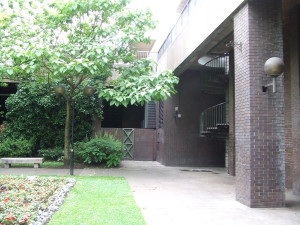“Wot, no trees?” asks Alan Clawley.
The developers of Paradise Circus, Argent and their financial backers, have announced that henceforth we must refer to it as ‘Paradise’.
The original Paradise was of course the Garden of Eden, commemorated in Victorian Birmingham by Eden Place, the passage between Colmore Row and Edmund Street and Paradise Street from Hill Street to Suffolk Street. Paradise Circus was a creature of Birmingham’s later obsession with the motor car.
The mythical Garden of Eden was lusciously verdant and the book of Genesis records that there was at least one apple tree there. But it’s hard to spot a tree of any kind in the computer-generated images of Argent’s Paradise. If there are any, they are mere tokens, isolated saplings, deprived of sunlight and hemmed in by towering office blocks.
Argent’s Brindley Place was built along the same lines as Argent’s Paradise – lots of paving, water features and large-scale sculptures but low on trees and soft landscaping. Argent could claim that hard landscape is inevitable for the public realm in a densely-packed city centre. But such a claim is contradicted in Argent’s own promotional video that takes the viewer on a helicopter ride around the city before settling on Paradise Circus. On the way it passes over some delightful-looking oases of greenery – St Pauls Square, St Phillips Square and City Centre Gardens on Cambridge Street.
Other cities show how urban greenery is possible – Bedford Square in London’s West End has a lovely garden in the centre full of mature trees, thanks to the foresight of its Georgian developers. And the value of the surrounding property couldn’t be higher.
It’s widely acknowledged that the city centre lacks green open spaces, hence the creation of Eastside Park. Manzoni Gardens is hardly remembered now; the mature trees in Corporation Street have been sacrificed to the Metro and the few existing mature trees in the garden opposite the Town Hall next to the Conservatoire are due to be destroyed for the new Paradise. The brief for the competition to re-design Centenary Square didn’t call for the creation of a city garden and is unlikely to result in one.
Calling a treeless collection of office blocks ‘Paradise’ can only bring ridicule to the city. Let it be officially named Argent’s Paradise when the final opening ceremony is held in 2026.




Trees don’t earn money you fool. They impose costs instead.
Reminds me of how many “investors” buy (or at least mortgage) a house, chop down the elegant trees, and then having “improved” it reckon to sell it for x0000 more. This in the context that:
(1) there’s a very obvious high correlation between the density of trees in a road and the prices of the properties; and
(2) you can chop down a mature tree but deciding on second thoughts you’d like one after all is not so easy.
“Let it be officially named Argent’s Paradise”
My only reservation about that is that it endorses the notion that such a key space and vital corridor can honestly become the “property” of some private entity. Some such contracts should be recognised as theft.
Brindley Place is virtually a private estate which manages (and controls) the so-called public realm independently of the Council.
I assume that ‘Paradise’ will go the same way.
Couldn’t Argent think of another historic figure that it could be named after?
How about Chamberlain Place or Bore Place?
I think you’ll find that “Argent’s A***hole” will become the natural nickname in due course anyway.
Brindley Place privatisation is relatively ok because no-one has to pass through it to get elsewhere. By contrast, anyone seeking to walk anywhere westwards from the city centre (no less) has NO OPTION than to pass through their private zone, or slum it through Fletcher’s Walk, or else long grim detours via Navigation St or Newhall St. That’s not acceptable.